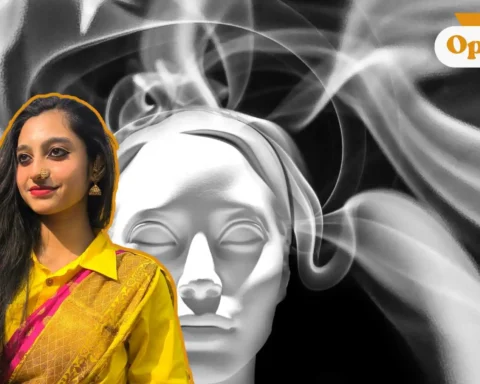The collective shouts of “Aao Aao Naatak Dekho” (Come come watch a play) have suddenly seemed to overpower the robust and catchy melodies of Bollywood songs. There are larger crowds queueing up to get tickets to their favourite plays than to the upcoming films. Auditoriums are witnessing a larger inflow of people than movie halls; is this a battle between authenticity and artificial intelligence?
Originally, plays were the norm before technology developed and cameras and computers were invented. The Greek and Roman plays in amphitheatres were the main source of entertainment for the elite and commoners alike. In India, nukkad natak or street plays attract diverse crowds. But as the popularity of cinema grew, people flocked to cinema halls as it seemed the onset of a new age pushed by technology. Gradually the admiration for theatre dwindled while that of films increased.
Bollywood came to be known worldwide for its colours, songs and dance sequences, which were unlike any film made all over the world. But as time progressed, writers ran out of stories to tell, and directors ran out of writers who could write anything close to the “old Bollywood”. What we see now are movies based on real life stories of people to raise awareness or historical movies. We lost the quintessential essence of Bollywood somewhere along the way.
In such a situation, it is the plays that offer something new and entertaining to the people. The raw nature of theatre offers an authenticity that succeeds in bringing about catharsis in the audience. In a place where the viewers become active participants and are free to gasp, laugh out loud, and applaud whenever they feel like it, as opposed to the strict dark silence of a cinema hall, it has started to attract more and more people who appreciate theatre as a true form of art.

The rise of streaming platforms has further cemented the power of film, offering instant access to content from around the world. However, there is an undeniable charm in watching actors perform in real time, without the crutch of retakes, edits, or CGI effects. Theatre offers an authenticity, intimacy, and emotional depth that cinema simply cannot replicate.
Theatre is an art form that thrives on presence. The connection between the performers and the audience creates an energy that cannot be duplicated in a pre-recorded film. Each performance is unique, influenced by the actors, the audience, and even the subtle nuances of the night. Unlike cinema, where scenes are stitched together in post-production, theatre demands precision and mastery at the moment. The risks and unpredictability of live performance make it thrilling—an element completely absent from the film, where mistakes are erased, and scenes are rehearsed to perfection.
As digital effects dominate cinema, audiences are beginning to crave authenticity. The overuse of CGI, green screens, and artificial enhancements has led to a certain detachment from reality. In contrast, theatre relies on raw talent, creative set design, and imaginative storytelling techniques that do not depend on computer-generated visuals. Theatrical performances demand that audiences suspend disbelief in a way that strengthens their engagement with the story. Further, movies have begun to capitalize on sequel films, prioritizing profit over substance. Theatre, however, remains a space for bold, thought-provoking storytelling. It is where playwrights and performers push boundaries, tackle complex themes, and challenge societal norms without the pressure of box office numbers.
The COVID-19 pandemic led to the temporary closure of both theatres and cinemas, forcing audiences to rely on digital content for entertainment. However, rather than diminishing the appeal of theatre, this period of isolation only heightened the appreciation for live experiences. As restrictions lifted, there was a renewed enthusiasm for in-person events, from concerts to plays. People realized that watching a film at home, no matter how advanced the technology, could never replace the thrill of a live performance.
While cinema will always hold its place as a dominant form of entertainment, theatre is proving that it is far from obsolete. The rawness of live performance, the depth of storytelling, and the intimacy between actors and audiences make it an irreplaceable experience. In an age of digital saturation, people are yearning for real, tangible connections—something that theatre provides in abundance. As more audiences rediscover the magic of live performance, it is clear that theatre is not just making a comeback; it is reclaiming its rightful place as the heart of storytelling.

Let us know your thoughts on the theatre versus cinema debate in the comment section below. If you have any burning opinions or ideas to share, feel free to contact us at larra@globalindiannetwork.com.









